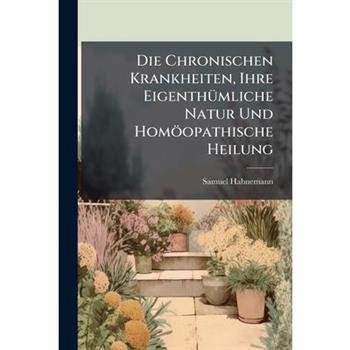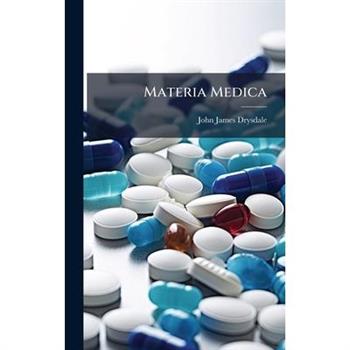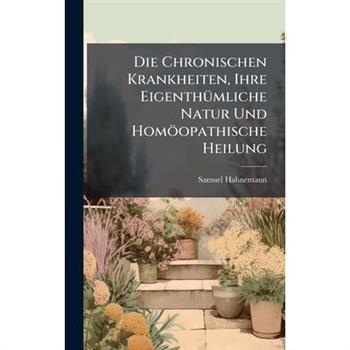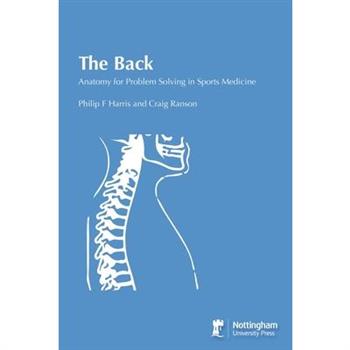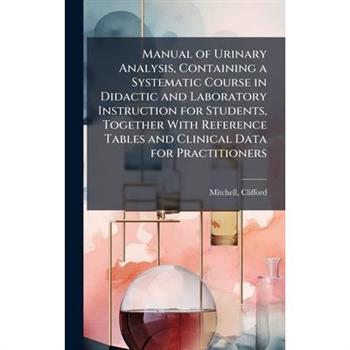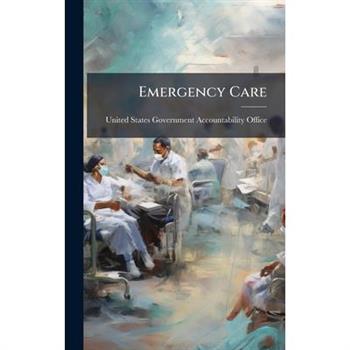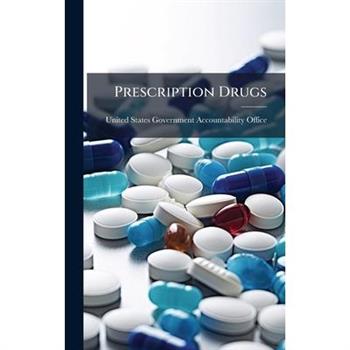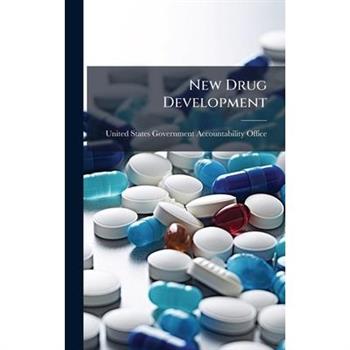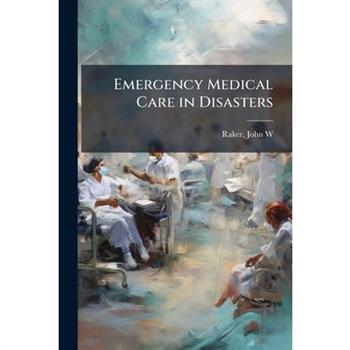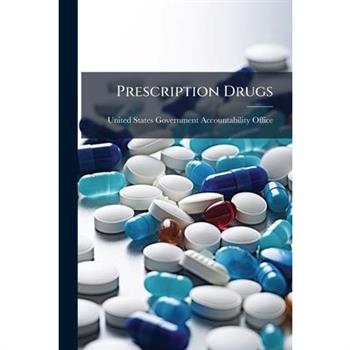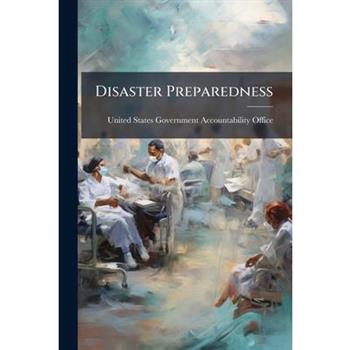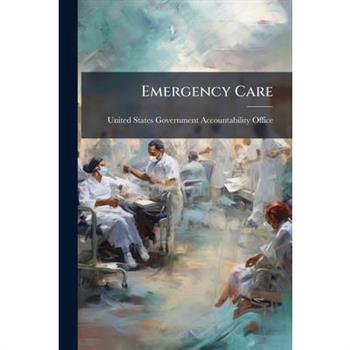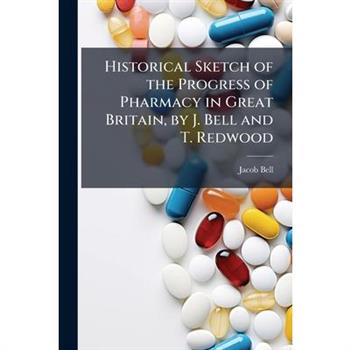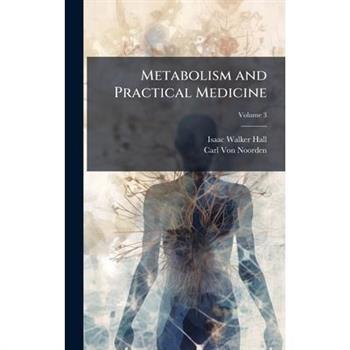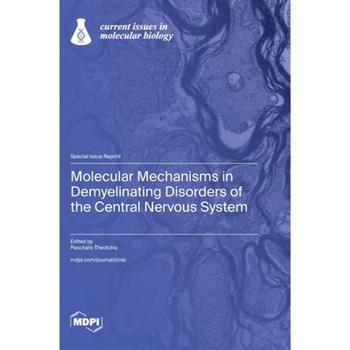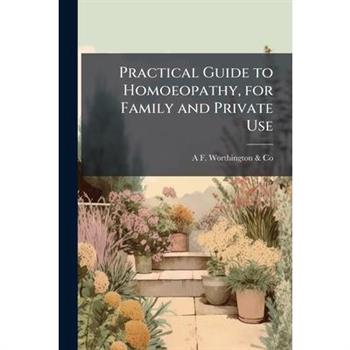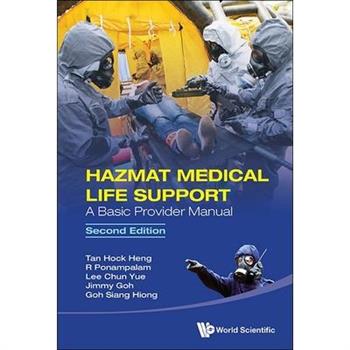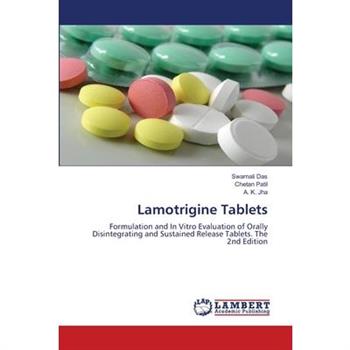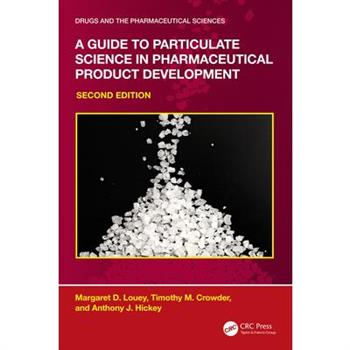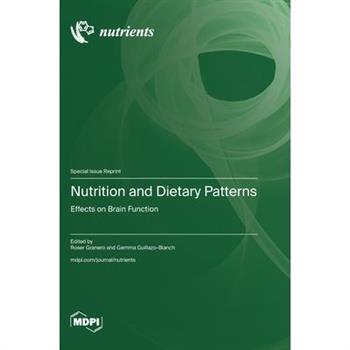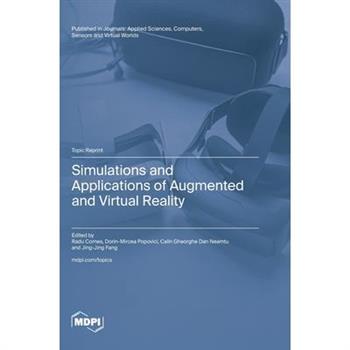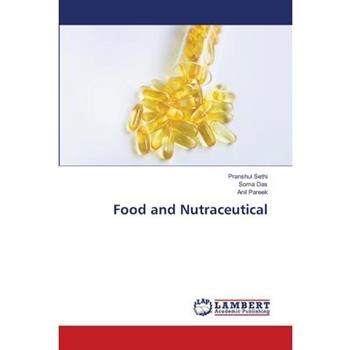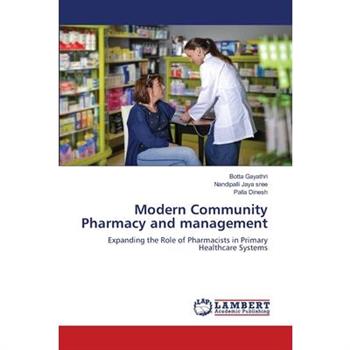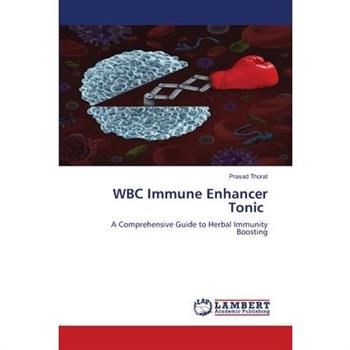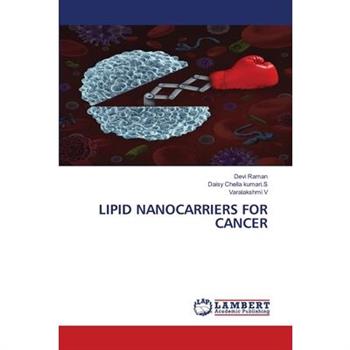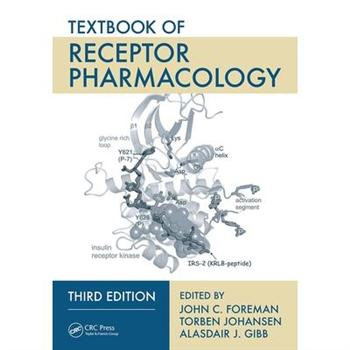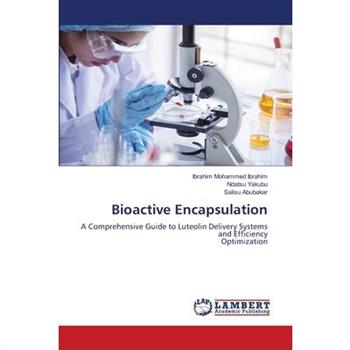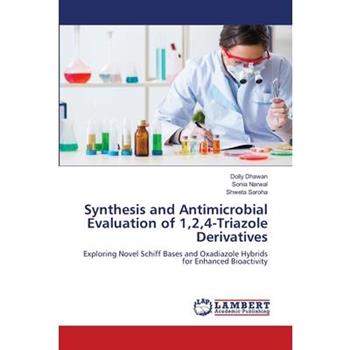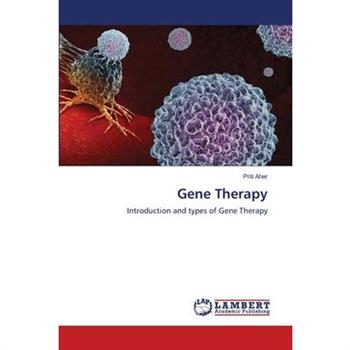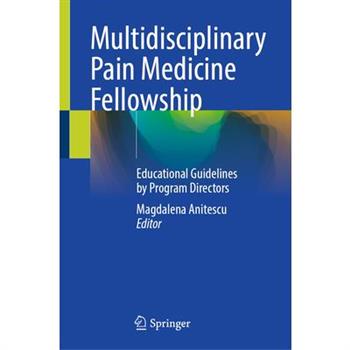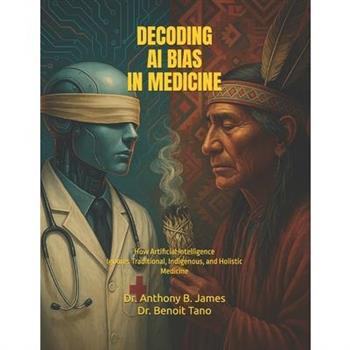Die Chronischen Krankheiten, Ihre Eigenth?1/4mliche Natur Und Hom繹opathische Heilung
"Die Chronischen Krankheiten, Ihre Eigenth?1/4mliche Natur Und Hom繹opathische Heilung" (The Chronic Diseases, Their Peculiar Nature and Homeopathic Healing), Part 4, "Antipsorische Arzneien" (Antipsoric Remedies), by Samuel Hahnemann, delves into the nature of chronic diseases and their treatment through homeopathic medicine. This volume specifically focuses on antipsoric remedies, exploring their preparation, application, and effects. Hahnemann's meticulous observations and detailed case studies offer insights into the understanding and treatment of chronic ailments. This work remains a significant contribution to the field of homeopathy and a valuable resource for practitioners and students alike. It highlights Hahnemann's groundbreaking theories and methods, making it an essential read for those interested in the history and practice of alternative medicine.This work has been selected by scholars as being culturally important, and is part of the knowledge base of civilization as we know it. This work was reproduced from the original artifact, and remains as true to the original work as possible. Therefore, you will see the original copyright references, library stamps (as most of these works have been housed in our most important libraries around the world), and other notations in the work.This work is in the public domain in the United States of America, and possibly other nations. Within the United States, you may freely copy and distribute this work, as no entity (individual or corporate) has a copyright on the body of the work.As a reproduction of a historical artifact, this work may contain missing or blurred pages, poor pictures, errant marks, etc. Scholars believe, and we concur, that this work is important enough to be preserved, reproduced, and made generally available to the public. We appreciate your support of the preservation process, and thank you for being an important part of keeping this knowledge alive and relevant.
Practical Druggist And Pharmaceutical Review Of Reviews, Volume 34, Issue 11
Explore the world of early 20th-century pharmacy with the "Practical Druggist And Pharmaceutical Review Of Reviews, Volume 34, Issue 11." This vintage issue provides a fascinating look into the practices, reviews, and advancements in pharmaceuticals of the time. A valuable resource for historians, pharmacists, and anyone interested in the evolution of medicine and drug development. Delve into detailed articles, reviews, and practical advice from an era when pharmacy was rapidly evolving. Discover the trends, challenges, and innovations that shaped the field, making this volume a unique glimpse into the past.This work has been selected by scholars as being culturally important, and is part of the knowledge base of civilization as we know it. This work was reproduced from the original artifact, and remains as true to the original work as possible. Therefore, you will see the original copyright references, library stamps (as most of these works have been housed in our most important libraries around the world), and other notations in the work.This work is in the public domain in the United States of America, and possibly other nations. Within the United States, you may freely copy and distribute this work, as no entity (individual or corporate) has a copyright on the body of the work.As a reproduction of a historical artifact, this work may contain missing or blurred pages, poor pictures, errant marks, etc. Scholars believe, and we concur, that this work is important enough to be preserved, reproduced, and made generally available to the public. We appreciate your support of the preservation process, and thank you for being an important part of keeping this knowledge alive and relevant.
Materia Medica
Materia Medica: Physiological and Applied explores the historical use and physiological effects of various medicinal substances. This comprehensive work by John James Drysdale delves into the properties of plants and other natural sources used in medicine, providing insights into their therapeutic applications. This book is an invaluable resource for understanding the foundations of pharmacology and the traditional uses of natural remedies. It offers a detailed examination of how these substances interact with the human body, making it essential reading for historians of medicine, students of pharmacology, and anyone interested in the evolution of medical treatments.This work has been selected by scholars as being culturally important, and is part of the knowledge base of civilization as we know it. This work was reproduced from the original artifact, and remains as true to the original work as possible. Therefore, you will see the original copyright references, library stamps (as most of these works have been housed in our most important libraries around the world), and other notations in the work.This work is in the public domain in the United States of America, and possibly other nations. Within the United States, you may freely copy and distribute this work, as no entity (individual or corporate) has a copyright on the body of the work.As a reproduction of a historical artifact, this work may contain missing or blurred pages, poor pictures, errant marks, etc. Scholars believe, and we concur, that this work is important enough to be preserved, reproduced, and made generally available to the public. We appreciate your support of the preservation process, and thank you for being an important part of keeping this knowledge alive and relevant.
Practical Druggist And Pharmaceutical Review Of Reviews, Volume 34, Issue 11
Explore the world of early 20th-century pharmacy with the "Practical Druggist And Pharmaceutical Review Of Reviews, Volume 34, Issue 11." This vintage issue provides a fascinating look into the practices, reviews, and advancements in pharmaceuticals of the time. A valuable resource for historians, pharmacists, and anyone interested in the evolution of medicine and drug development. Delve into detailed articles, reviews, and practical advice from an era when pharmacy was rapidly evolving. Discover the trends, challenges, and innovations that shaped the field, making this volume a unique glimpse into the past.This work has been selected by scholars as being culturally important, and is part of the knowledge base of civilization as we know it. This work was reproduced from the original artifact, and remains as true to the original work as possible. Therefore, you will see the original copyright references, library stamps (as most of these works have been housed in our most important libraries around the world), and other notations in the work.This work is in the public domain in the United States of America, and possibly other nations. Within the United States, you may freely copy and distribute this work, as no entity (individual or corporate) has a copyright on the body of the work.As a reproduction of a historical artifact, this work may contain missing or blurred pages, poor pictures, errant marks, etc. Scholars believe, and we concur, that this work is important enough to be preserved, reproduced, and made generally available to the public. We appreciate your support of the preservation process, and thank you for being an important part of keeping this knowledge alive and relevant.
Die Chronischen Krankheiten, Ihre Eigenth?1/4mliche Natur Und Hom繹opathische Heilung
"Die Chronischen Krankheiten, Ihre Eigenth?1/4mliche Natur Und Hom繹opathische Heilung" (The Chronic Diseases, Their Peculiar Nature and Homeopathic Healing), Part 4, "Antipsorische Arzneien" (Antipsoric Remedies), by Samuel Hahnemann, delves into the nature of chronic diseases and their treatment through homeopathic medicine. This volume specifically focuses on antipsoric remedies, exploring their preparation, application, and effects. Hahnemann's meticulous observations and detailed case studies offer insights into the understanding and treatment of chronic ailments. This work remains a significant contribution to the field of homeopathy and a valuable resource for practitioners and students alike. It highlights Hahnemann's groundbreaking theories and methods, making it an essential read for those interested in the history and practice of alternative medicine.This work has been selected by scholars as being culturally important, and is part of the knowledge base of civilization as we know it. This work was reproduced from the original artifact, and remains as true to the original work as possible. Therefore, you will see the original copyright references, library stamps (as most of these works have been housed in our most important libraries around the world), and other notations in the work.This work is in the public domain in the United States of America, and possibly other nations. Within the United States, you may freely copy and distribute this work, as no entity (individual or corporate) has a copyright on the body of the work.As a reproduction of a historical artifact, this work may contain missing or blurred pages, poor pictures, errant marks, etc. Scholars believe, and we concur, that this work is important enough to be preserved, reproduced, and made generally available to the public. We appreciate your support of the preservation process, and thank you for being an important part of keeping this knowledge alive and relevant.
Peptide Science
Understand the nature and applications of peptides with this clear and comprehensive guide Peptides are signaling molecules comprised of amino acids which play an important role in modulating certain physiological processes. They have a wide range of applications, particularly with respect to biological studies and therapeutical potentials. The explosive growth of peptide science in recent years and the variety of achievements in peptide drug discovery and related areas have made it an important area of study for new researchers and industry professionals. Peptide Science offers a clear, systematic overview of this burgeoning field and its major applications. Covering the chemistry, the pertinent technologies, and major existing therapies, it provides the tools required to integrate peptide research with virtually any area of research and development. Fully cognizant of the latest technological advances, it's a must-own for anyone looking to understand a vital field of chemistry. Peptide Science readers will also find: Through coverage of peptide hit generation technologies from nature, to various display libraries and to modern computational designs Detailed discussion of therapies for conditions including cancer, diabetes, infectious diseases, and more A section dedicated to key challenges and future directions in peptide therapeutics Peptide Science is ideal for industry professionals and researchers in organic chemistry, peptide science/chemistry, protein chemistry, biochemistry, and pharmaceutical sciences.
The Back
Original edition reissued in 2023 with new cover. This is a print on demand title and is not held in stock. The delivery leadtimes will be longer. The Authors of this book are an Anatomist and a Sports Physiotherapist with wide experience of teaching both postgraduate and undergraduate courses related to sports injuries. Because of its critical location in the body and its many components, diagnosing, managing and rehabilitating sport-related back injury is extremely challenging and requires a detailed knowledge of the associated anatomy. This book reviews in detail the structure and functional anatomy of the back and its many components, emphasising those points which are relevant to sports injuries.The book has three special features. Firstly, it focuses on the essential components of the back which must be in mind when solving sport injury problems and disorders. Secondly, the content has been assembled and distilled from various sources over and above what can be found in conventional textbooks of anatomy, to provide a level of understanding which is both academic and necessary for diagnosing and managing sporting back disorders.Thirdly, throughout the book case studies and clinical reasoning of the associated problems are presented showing how knowledge of anatomy can be applied to solve many problems associated with sports injury.The book is fully illustrated with line drawings, photographs of actual anatomical structures, scans and x-radiographs.
Manual of Urinary Analysis, Containing a Systematic Course in Didactic and Laboratory Instruction for Students, Together With Reference Tables and Clinical Data for Practitioners
"Manual of Urinary Analysis" by Clifford Mitchell, published in 1902, provides a comprehensive guide to the theory and practice of urinalysis. Designed as both a textbook for students and a reference for practitioners, it offers a systematic course of didactic and laboratory instruction. The manual includes detailed reference tables and clinical data, making it an invaluable resource for understanding diagnostic techniques relevant to 19th-century medical practice. This historic text offers insights into early methods of disease detection and diagnosis through the examination of urine, reflecting the state of medical knowledge at the turn of the century. It provides a valuable lens through which to view the evolution of laboratory medicine and urological practices.This work has been selected by scholars as being culturally important, and is part of the knowledge base of civilization as we know it. This work was reproduced from the original artifact, and remains as true to the original work as possible. Therefore, you will see the original copyright references, library stamps (as most of these works have been housed in our most important libraries around the world), and other notations in the work.This work is in the public domain in the United States of America, and possibly other nations. Within the United States, you may freely copy and distribute this work, as no entity (individual or corporate) has a copyright on the body of the work.As a reproduction of a historical artifact, this work may contain missing or blurred pages, poor pictures, errant marks, etc. Scholars believe, and we concur, that this work is important enough to be preserved, reproduced, and made generally available to the public. We appreciate your support of the preservation process, and thank you for being an important part of keeping this knowledge alive and relevant.
Emergency Care
The BiblioGov Project is an effort to expand awareness of the public documents and records of the U.S. Government via print publications. In broadening the public understanding of government and its work, an enlightened democracy can grow and prosper. Ranging from historic Congressional Bills to the most recent Budget of the United States Government, the BiblioGov Project spans a wealth of government information. These works are now made available through an environmentally friendly, print-on-demand basis, using only what is necessary to meet the required demands of an interested public. We invite you to learn of the records of the U.S. Government, heightening the knowledge and debate that can lead from such publications.This work has been selected by scholars as being culturally important, and is part of the knowledge base of civilization as we know it. This work was reproduced from the original artifact, and remains as true to the original work as possible. Therefore, you will see the original copyright references, library stamps (as most of these works have been housed in our most important libraries around the world), and other notations in the work.This work is in the public domain in the United States of America, and possibly other nations. Within the United States, you may freely copy and distribute this work, as no entity (individual or corporate) has a copyright on the body of the work.As a reproduction of a historical artifact, this work may contain missing or blurred pages, poor pictures, errant marks, etc. Scholars believe, and we concur, that this work is important enough to be preserved, reproduced, and made generally available to the public. We appreciate your support of the preservation process, and thank you for being an important part of keeping this knowledge alive and relevant.
Generation Rx
The BiblioGov Project is an effort to expand awareness of the public documents and records of the U.S. Government via print publications. In broadening the public understanding of government and its work, an enlightened democracy can grow and prosper. Ranging from historic Congressional Bills to the most recent Budget of the United States Government, the BiblioGov Project spans a wealth of government information. These works are now made available through an environmentally friendly, print-on-demand basis, using only what is necessary to meet the required demands of an interested public. We invite you to learn of the records of the U.S. Government, heightening the knowledge and debate that can lead from such publications.This work has been selected by scholars as being culturally important, and is part of the knowledge base of civilization as we know it. This work was reproduced from the original artifact, and remains as true to the original work as possible. Therefore, you will see the original copyright references, library stamps (as most of these works have been housed in our most important libraries around the world), and other notations in the work.This work is in the public domain in the United States of America, and possibly other nations. Within the United States, you may freely copy and distribute this work, as no entity (individual or corporate) has a copyright on the body of the work.As a reproduction of a historical artifact, this work may contain missing or blurred pages, poor pictures, errant marks, etc. Scholars believe, and we concur, that this work is important enough to be preserved, reproduced, and made generally available to the public. We appreciate your support of the preservation process, and thank you for being an important part of keeping this knowledge alive and relevant.
Prescription Drugs
The BiblioGov Project is an effort to expand awareness of the public documents and records of the U.S. Government via print publications. In broadening the public understanding of government and its work, an enlightened democracy can grow and prosper. Ranging from historic Congressional Bills to the most recent Budget of the United States Government, the BiblioGov Project spans a wealth of government information. These works are now made available through an environmentally friendly, print-on-demand basis, using only what is necessary to meet the required demands of an interested public. We invite you to learn of the records of the U.S. Government, heightening the knowledge and debate that can lead from such publications.This work has been selected by scholars as being culturally important, and is part of the knowledge base of civilization as we know it. This work was reproduced from the original artifact, and remains as true to the original work as possible. Therefore, you will see the original copyright references, library stamps (as most of these works have been housed in our most important libraries around the world), and other notations in the work.This work is in the public domain in the United States of America, and possibly other nations. Within the United States, you may freely copy and distribute this work, as no entity (individual or corporate) has a copyright on the body of the work.As a reproduction of a historical artifact, this work may contain missing or blurred pages, poor pictures, errant marks, etc. Scholars believe, and we concur, that this work is important enough to be preserved, reproduced, and made generally available to the public. We appreciate your support of the preservation process, and thank you for being an important part of keeping this knowledge alive and relevant.
New Drug Development
The BiblioGov Project is an effort to expand awareness of the public documents and records of the U.S. Government via print publications. In broadening the public understanding of government and its work, an enlightened democracy can grow and prosper. Ranging from historic Congressional Bills to the most recent Budget of the United States Government, the BiblioGov Project spans a wealth of government information. These works are now made available through an environmentally friendly, print-on-demand basis, using only what is necessary to meet the required demands of an interested public. We invite you to learn of the records of the U.S. Government, heightening the knowledge and debate that can lead from such publications.This work has been selected by scholars as being culturally important, and is part of the knowledge base of civilization as we know it. This work was reproduced from the original artifact, and remains as true to the original work as possible. Therefore, you will see the original copyright references, library stamps (as most of these works have been housed in our most important libraries around the world), and other notations in the work.This work is in the public domain in the United States of America, and possibly other nations. Within the United States, you may freely copy and distribute this work, as no entity (individual or corporate) has a copyright on the body of the work.As a reproduction of a historical artifact, this work may contain missing or blurred pages, poor pictures, errant marks, etc. Scholars believe, and we concur, that this work is important enough to be preserved, reproduced, and made generally available to the public. We appreciate your support of the preservation process, and thank you for being an important part of keeping this knowledge alive and relevant.
Disaster Preparedness
The BiblioGov Project is an effort to expand awareness of the public documents and records of the U.S. Government via print publications. In broadening the public understanding of government and its work, an enlightened democracy can grow and prosper. Ranging from historic Congressional Bills to the most recent Budget of the United States Government, the BiblioGov Project spans a wealth of government information. These works are now made available through an environmentally friendly, print-on-demand basis, using only what is necessary to meet the required demands of an interested public. We invite you to learn of the records of the U.S. Government, heightening the knowledge and debate that can lead from such publications.This work has been selected by scholars as being culturally important, and is part of the knowledge base of civilization as we know it. This work was reproduced from the original artifact, and remains as true to the original work as possible. Therefore, you will see the original copyright references, library stamps (as most of these works have been housed in our most important libraries around the world), and other notations in the work.This work is in the public domain in the United States of America, and possibly other nations. Within the United States, you may freely copy and distribute this work, as no entity (individual or corporate) has a copyright on the body of the work.As a reproduction of a historical artifact, this work may contain missing or blurred pages, poor pictures, errant marks, etc. Scholars believe, and we concur, that this work is important enough to be preserved, reproduced, and made generally available to the public. We appreciate your support of the preservation process, and thank you for being an important part of keeping this knowledge alive and relevant.
Pharmaceutical Supply Chain Security
The BiblioGov Project is an effort to expand awareness of the public documents and records of the U.S. Government via print publications. In broadening the public understanding of government and its work, an enlightened democracy can grow and prosper. Ranging from historic Congressional Bills to the most recent Budget of the United States Government, the BiblioGov Project spans a wealth of government information. These works are now made available through an environmentally friendly, print-on-demand basis, using only what is necessary to meet the required demands of an interested public. We invite you to learn of the records of the U.S. Government, heightening the knowledge and debate that can lead from such publications.This work has been selected by scholars as being culturally important, and is part of the knowledge base of civilization as we know it. This work was reproduced from the original artifact, and remains as true to the original work as possible. Therefore, you will see the original copyright references, library stamps (as most of these works have been housed in our most important libraries around the world), and other notations in the work.This work is in the public domain in the United States of America, and possibly other nations. Within the United States, you may freely copy and distribute this work, as no entity (individual or corporate) has a copyright on the body of the work.As a reproduction of a historical artifact, this work may contain missing or blurred pages, poor pictures, errant marks, etc. Scholars believe, and we concur, that this work is important enough to be preserved, reproduced, and made generally available to the public. We appreciate your support of the preservation process, and thank you for being an important part of keeping this knowledge alive and relevant.
Emergency Medical Care in Disasters
Emergency Medical Care in Disasters, by John W. Raker, provides essential guidance for medical professionals and first responders dealing with large-scale emergencies. Originally published in 1956, this book offers a comprehensive overview of the strategies and techniques necessary to provide effective medical care in the chaotic environment following a disaster. The text covers a range of critical topics, including triage, first aid, and the coordination of medical resources. While some information may reflect the practices of the mid-20th century, the fundamental principles discussed remain highly relevant to modern disaster preparedness and response. This book is a valuable historical resource for understanding the evolution of emergency medical practices and a foundational reference for anyone interested in the field.This work has been selected by scholars as being culturally important, and is part of the knowledge base of civilization as we know it. This work was reproduced from the original artifact, and remains as true to the original work as possible. Therefore, you will see the original copyright references, library stamps (as most of these works have been housed in our most important libraries around the world), and other notations in the work.This work is in the public domain in the United States of America, and possibly other nations. Within the United States, you may freely copy and distribute this work, as no entity (individual or corporate) has a copyright on the body of the work.As a reproduction of a historical artifact, this work may contain missing or blurred pages, poor pictures, errant marks, etc. Scholars believe, and we concur, that this work is important enough to be preserved, reproduced, and made generally available to the public. We appreciate your support of the preservation process, and thank you for being an important part of keeping this knowledge alive and relevant.
Prescription Drugs
The BiblioGov Project is an effort to expand awareness of the public documents and records of the U.S. Government via print publications. In broadening the public understanding of government and its work, an enlightened democracy can grow and prosper. Ranging from historic Congressional Bills to the most recent Budget of the United States Government, the BiblioGov Project spans a wealth of government information. These works are now made available through an environmentally friendly, print-on-demand basis, using only what is necessary to meet the required demands of an interested public. We invite you to learn of the records of the U.S. Government, heightening the knowledge and debate that can lead from such publications.This work has been selected by scholars as being culturally important, and is part of the knowledge base of civilization as we know it. This work was reproduced from the original artifact, and remains as true to the original work as possible. Therefore, you will see the original copyright references, library stamps (as most of these works have been housed in our most important libraries around the world), and other notations in the work.This work is in the public domain in the United States of America, and possibly other nations. Within the United States, you may freely copy and distribute this work, as no entity (individual or corporate) has a copyright on the body of the work.As a reproduction of a historical artifact, this work may contain missing or blurred pages, poor pictures, errant marks, etc. Scholars believe, and we concur, that this work is important enough to be preserved, reproduced, and made generally available to the public. We appreciate your support of the preservation process, and thank you for being an important part of keeping this knowledge alive and relevant.
New Drug Development
The BiblioGov Project is an effort to expand awareness of the public documents and records of the U.S. Government via print publications. In broadening the public understanding of government and its work, an enlightened democracy can grow and prosper. Ranging from historic Congressional Bills to the most recent Budget of the United States Government, the BiblioGov Project spans a wealth of government information. These works are now made available through an environmentally friendly, print-on-demand basis, using only what is necessary to meet the required demands of an interested public. We invite you to learn of the records of the U.S. Government, heightening the knowledge and debate that can lead from such publications.This work has been selected by scholars as being culturally important, and is part of the knowledge base of civilization as we know it. This work was reproduced from the original artifact, and remains as true to the original work as possible. Therefore, you will see the original copyright references, library stamps (as most of these works have been housed in our most important libraries around the world), and other notations in the work.This work is in the public domain in the United States of America, and possibly other nations. Within the United States, you may freely copy and distribute this work, as no entity (individual or corporate) has a copyright on the body of the work.As a reproduction of a historical artifact, this work may contain missing or blurred pages, poor pictures, errant marks, etc. Scholars believe, and we concur, that this work is important enough to be preserved, reproduced, and made generally available to the public. We appreciate your support of the preservation process, and thank you for being an important part of keeping this knowledge alive and relevant.
Pharmaceutical Supply Chain Security
The BiblioGov Project is an effort to expand awareness of the public documents and records of the U.S. Government via print publications. In broadening the public understanding of government and its work, an enlightened democracy can grow and prosper. Ranging from historic Congressional Bills to the most recent Budget of the United States Government, the BiblioGov Project spans a wealth of government information. These works are now made available through an environmentally friendly, print-on-demand basis, using only what is necessary to meet the required demands of an interested public. We invite you to learn of the records of the U.S. Government, heightening the knowledge and debate that can lead from such publications.This work has been selected by scholars as being culturally important, and is part of the knowledge base of civilization as we know it. This work was reproduced from the original artifact, and remains as true to the original work as possible. Therefore, you will see the original copyright references, library stamps (as most of these works have been housed in our most important libraries around the world), and other notations in the work.This work is in the public domain in the United States of America, and possibly other nations. Within the United States, you may freely copy and distribute this work, as no entity (individual or corporate) has a copyright on the body of the work.As a reproduction of a historical artifact, this work may contain missing or blurred pages, poor pictures, errant marks, etc. Scholars believe, and we concur, that this work is important enough to be preserved, reproduced, and made generally available to the public. We appreciate your support of the preservation process, and thank you for being an important part of keeping this knowledge alive and relevant.
Disaster Preparedness
The BiblioGov Project is an effort to expand awareness of the public documents and records of the U.S. Government via print publications. In broadening the public understanding of government and its work, an enlightened democracy can grow and prosper. Ranging from historic Congressional Bills to the most recent Budget of the United States Government, the BiblioGov Project spans a wealth of government information. These works are now made available through an environmentally friendly, print-on-demand basis, using only what is necessary to meet the required demands of an interested public. We invite you to learn of the records of the U.S. Government, heightening the knowledge and debate that can lead from such publications.This work has been selected by scholars as being culturally important, and is part of the knowledge base of civilization as we know it. This work was reproduced from the original artifact, and remains as true to the original work as possible. Therefore, you will see the original copyright references, library stamps (as most of these works have been housed in our most important libraries around the world), and other notations in the work.This work is in the public domain in the United States of America, and possibly other nations. Within the United States, you may freely copy and distribute this work, as no entity (individual or corporate) has a copyright on the body of the work.As a reproduction of a historical artifact, this work may contain missing or blurred pages, poor pictures, errant marks, etc. Scholars believe, and we concur, that this work is important enough to be preserved, reproduced, and made generally available to the public. We appreciate your support of the preservation process, and thank you for being an important part of keeping this knowledge alive and relevant.
Emergency Care
The BiblioGov Project is an effort to expand awareness of the public documents and records of the U.S. Government via print publications. In broadening the public understanding of government and its work, an enlightened democracy can grow and prosper. Ranging from historic Congressional Bills to the most recent Budget of the United States Government, the BiblioGov Project spans a wealth of government information. These works are now made available through an environmentally friendly, print-on-demand basis, using only what is necessary to meet the required demands of an interested public. We invite you to learn of the records of the U.S. Government, heightening the knowledge and debate that can lead from such publications.This work has been selected by scholars as being culturally important, and is part of the knowledge base of civilization as we know it. This work was reproduced from the original artifact, and remains as true to the original work as possible. Therefore, you will see the original copyright references, library stamps (as most of these works have been housed in our most important libraries around the world), and other notations in the work.This work is in the public domain in the United States of America, and possibly other nations. Within the United States, you may freely copy and distribute this work, as no entity (individual or corporate) has a copyright on the body of the work.As a reproduction of a historical artifact, this work may contain missing or blurred pages, poor pictures, errant marks, etc. Scholars believe, and we concur, that this work is important enough to be preserved, reproduced, and made generally available to the public. We appreciate your support of the preservation process, and thank you for being an important part of keeping this knowledge alive and relevant.
Historical Sketch of the Progress of Pharmacy in Great Britain, by J. Bell and T. Redwood
"Historical Sketch of the Progress of Pharmacy in Great Britain" offers a detailed overview of the evolution of pharmaceutical practices within Great Britain. Authored by Jacob Bell, this historical account explores the development of pharmacy as a profession, highlighting key milestones, influential figures, and the changing landscape of medicinal practices. The book delves into the roles and responsibilities of apothecaries and chemists, examining the social and scientific contexts that shaped their profession. With an emphasis on the advancements and challenges faced during the period, this sketch provides valuable insights into the historical roots of modern pharmacy.This book is an invaluable resource for anyone interested in the history of medicine, pharmacy, and the social history of science in Great Britain.This work has been selected by scholars as being culturally important, and is part of the knowledge base of civilization as we know it. This work was reproduced from the original artifact, and remains as true to the original work as possible. Therefore, you will see the original copyright references, library stamps (as most of these works have been housed in our most important libraries around the world), and other notations in the work.This work is in the public domain in the United States of America, and possibly other nations. Within the United States, you may freely copy and distribute this work, as no entity (individual or corporate) has a copyright on the body of the work.As a reproduction of a historical artifact, this work may contain missing or blurred pages, poor pictures, errant marks, etc. Scholars believe, and we concur, that this work is important enough to be preserved, reproduced, and made generally available to the public. We appreciate your support of the preservation process, and thank you for being an important part of keeping this knowledge alive and relevant.
Practical Guide to Homoeopathy, for Family and Private Use
"Practical Guide to Homoeopathy, for Family and Private Use" is a comprehensive manual compiled from the works of renowned homoeopathic practitioners such as Pulte, Laurie, Hempel, Ruddock, Burt, and Verdi. This guide offers practical advice on using twenty-eight common homoeopathic remedies, making it an invaluable resource for families and individuals interested in alternative medicine. Originally published in 1883, this book provides insights into the principles and practices of homeopathy as they were understood in the late 19th century. It serves as a historical record of homoeopathic treatments and a practical reference for those seeking natural approaches to health and wellness. Whether you are new to homeopathy or have some experience with it, this guide offers accessible information and practical guidance for using these remedies in your daily life.This work has been selected by scholars as being culturally important, and is part of the knowledge base of civilization as we know it. This work was reproduced from the original artifact, and remains as true to the original work as possible. Therefore, you will see the original copyright references, library stamps (as most of these works have been housed in our most important libraries around the world), and other notations in the work.This work is in the public domain in the United States of America, and possibly other nations. Within the United States, you may freely copy and distribute this work, as no entity (individual or corporate) has a copyright on the body of the work.As a reproduction of a historical artifact, this work may contain missing or blurred pages, poor pictures, errant marks, etc. Scholars believe, and we concur, that this work is important enough to be preserved, reproduced, and made generally available to the public. We appreciate your support of the preservation process, and thank you for being an important part of keeping this knowledge alive and relevant.
Metabolism and Practical Medicine
"Metabolism and Practical Medicine, Volume 3" offers a detailed exploration of metabolic processes and their clinical applications in the early 20th century. Authored by Isaac Walker Hall and Carl Von Noorden, this volume provides insights into the understanding and treatment of metabolic disorders prevalent during the time. It discusses various aspects of metabolism, relating them to practical medical scenarios. This historical medical text is valuable for those interested in the evolution of medical science, particularly concerning internal medicine and physiology. It sheds light on the diagnostic and therapeutic approaches used at the turn of the century, offering a unique perspective on the foundations of modern metabolic medicine.This work has been selected by scholars as being culturally important, and is part of the knowledge base of civilization as we know it. This work was reproduced from the original artifact, and remains as true to the original work as possible. Therefore, you will see the original copyright references, library stamps (as most of these works have been housed in our most important libraries around the world), and other notations in the work.This work is in the public domain in the United States of America, and possibly other nations. Within the United States, you may freely copy and distribute this work, as no entity (individual or corporate) has a copyright on the body of the work.As a reproduction of a historical artifact, this work may contain missing or blurred pages, poor pictures, errant marks, etc. Scholars believe, and we concur, that this work is important enough to be preserved, reproduced, and made generally available to the public. We appreciate your support of the preservation process, and thank you for being an important part of keeping this knowledge alive and relevant.
Historical Sketch of the Progress of Pharmacy in Great Britain, by J. Bell and T. Redwood
"Historical Sketch of the Progress of Pharmacy in Great Britain" offers a detailed overview of the evolution of pharmaceutical practices within Great Britain. Authored by Jacob Bell, this historical account explores the development of pharmacy as a profession, highlighting key milestones, influential figures, and the changing landscape of medicinal practices. The book delves into the roles and responsibilities of apothecaries and chemists, examining the social and scientific contexts that shaped their profession. With an emphasis on the advancements and challenges faced during the period, this sketch provides valuable insights into the historical roots of modern pharmacy.This book is an invaluable resource for anyone interested in the history of medicine, pharmacy, and the social history of science in Great Britain.This work has been selected by scholars as being culturally important, and is part of the knowledge base of civilization as we know it. This work was reproduced from the original artifact, and remains as true to the original work as possible. Therefore, you will see the original copyright references, library stamps (as most of these works have been housed in our most important libraries around the world), and other notations in the work.This work is in the public domain in the United States of America, and possibly other nations. Within the United States, you may freely copy and distribute this work, as no entity (individual or corporate) has a copyright on the body of the work.As a reproduction of a historical artifact, this work may contain missing or blurred pages, poor pictures, errant marks, etc. Scholars believe, and we concur, that this work is important enough to be preserved, reproduced, and made generally available to the public. We appreciate your support of the preservation process, and thank you for being an important part of keeping this knowledge alive and relevant.
Metabolism and Practical Medicine
"Metabolism and Practical Medicine, Volume 3" offers a detailed exploration of metabolic processes and their clinical applications in the early 20th century. Authored by Isaac Walker Hall and Carl Von Noorden, this volume provides insights into the understanding and treatment of metabolic disorders prevalent during the time. It discusses various aspects of metabolism, relating them to practical medical scenarios. This historical medical text is valuable for those interested in the evolution of medical science, particularly concerning internal medicine and physiology. It sheds light on the diagnostic and therapeutic approaches used at the turn of the century, offering a unique perspective on the foundations of modern metabolic medicine.This work has been selected by scholars as being culturally important, and is part of the knowledge base of civilization as we know it. This work was reproduced from the original artifact, and remains as true to the original work as possible. Therefore, you will see the original copyright references, library stamps (as most of these works have been housed in our most important libraries around the world), and other notations in the work.This work is in the public domain in the United States of America, and possibly other nations. Within the United States, you may freely copy and distribute this work, as no entity (individual or corporate) has a copyright on the body of the work.As a reproduction of a historical artifact, this work may contain missing or blurred pages, poor pictures, errant marks, etc. Scholars believe, and we concur, that this work is important enough to be preserved, reproduced, and made generally available to the public. We appreciate your support of the preservation process, and thank you for being an important part of keeping this knowledge alive and relevant.
Molecular Mechanisms in Demyelinating Disorders of the Central Nervous System
This Special Issue reprint explores the molecular mechanisms driving myelin formation, maintenance, and breakdown within the central nervous system, offering a focused insight into demyelinating disorders such as multiple sclerosis. The article "Exploring Myelin Dynamics in Demyelinating Disorders at the Molecular Level" offers a curated overview of recent advances in oligodendrocyte biology, highlighting key regulatory pathways, transcription factors, and cellular interactions that govern myelin dynamics. Drawing from ten representative studies, it emphasizes the translational relevance of early developmental signals, the role of neural and immune system cross-talk, and promising regenerative strategies. Particular attention is given to how molecular and cellular processes contribute to disease progression and to how targeted interventions might reshape current therapeutic approaches. This reprint is especially valuable for researchers and clinicians interested in neuroregeneration, glial biology, and CNS pathophysiology, providing a concise yet comprehensive synthesis of current trends in demyelination research.
Equine Gait Analysis
From ancient cave paintings to modern research labs, equine locomotion remains a source of fascination. Recent developments in computerization, artificial intelligence (AI), and wearable sensor technologies mean that researchers, veterinarians, and equestrians can now acquire high-quality data from horses in motion during clinical evaluations or athletic pursuits. This Special Issue is dedicated to showcasing these advancements in the field of equine biomechanics. The broad spectrum of topics covered in this reprint includes characterizations of gait type and quality of movement; the harnessing of artificial intelligence for lameness detection; the electromyographic evaluation of muscle function during canter; and the evaluation of limb-arena surface interactions during jumping, thresholds for upper body asymmetry parameters during straight and circular motion, axial and limb asymmetries of high-level dressage horses, and the effect of tack design on performance. Some of these studies contribute new knowledge using well-established techniques, such as videography, used with or without dedicated software to aid in data reduction. Other studies make use of novel, emerging techniques-made possible through the development of wearable sensors and apps-that utilize built-in smartphone cameras and AI to quantify gait asymmetries. Applications of AI and markerless motion capture are undoubtedly only the tip of an emerging iceberg in the transference of science into the hands of practitioners and equestrians via field-deployable and user-friendly applications for analyzing equine gait. The future in this arena of research is promising.
Practical Guide to Homoeopathy, for Family and Private Use
"Practical Guide to Homoeopathy, for Family and Private Use" is a comprehensive manual compiled from the works of renowned homoeopathic practitioners such as Pulte, Laurie, Hempel, Ruddock, Burt, and Verdi. This guide offers practical advice on using twenty-eight common homoeopathic remedies, making it an invaluable resource for families and individuals interested in alternative medicine. Originally published in 1883, this book provides insights into the principles and practices of homeopathy as they were understood in the late 19th century. It serves as a historical record of homoeopathic treatments and a practical reference for those seeking natural approaches to health and wellness. Whether you are new to homeopathy or have some experience with it, this guide offers accessible information and practical guidance for using these remedies in your daily life.This work has been selected by scholars as being culturally important, and is part of the knowledge base of civilization as we know it. This work was reproduced from the original artifact, and remains as true to the original work as possible. Therefore, you will see the original copyright references, library stamps (as most of these works have been housed in our most important libraries around the world), and other notations in the work.This work is in the public domain in the United States of America, and possibly other nations. Within the United States, you may freely copy and distribute this work, as no entity (individual or corporate) has a copyright on the body of the work.As a reproduction of a historical artifact, this work may contain missing or blurred pages, poor pictures, errant marks, etc. Scholars believe, and we concur, that this work is important enough to be preserved, reproduced, and made generally available to the public. We appreciate your support of the preservation process, and thank you for being an important part of keeping this knowledge alive and relevant.
Hazmat Med Life Support (2nd Ed)
The Hazmat Medical Life Support basic provider course book aims to equip medical responders to a hazmat incident - chemical, radiological or biological - with essential skills and knowledge to safely and effectively manage casualties. It includes basic information about hazmat agents and provides easy to remember algorithmic approaches for the on-scene management of a hazmat event. Essential information on setting up medical operations, triaging and approach to hazmat casualties, personal protective equipment, decontamination, wound management, life support as well as paediatric-specific issues are presented in this book.In this second edition, the content have been revised and updated but still keeping to the same basic approach targeted at medical personnel who are first responders or receivers to hazmat events. New resources especially regarding chemical weapons, antidotes as well as biological agents have been added to keep up to date with current practices. The systematic and practical approach as well as the focus on basic and key issues for specific hazmat agents would be useful foundational training for all levels of medical responders.
Lamotrigine Tablets
Epilepsy is a common chronic neurological disorder characterized by recurrent unprovoked seizures. While traditional anticonvulsant drugs are primarily antimanic agents, lamotrigine is recognized as one of the most effective drugs for the treatment and prophylaxis of bipolar depression. Two novel drug delivery systems were developed for lamotrigine: orally disintegrating tablets (ODTs) and sustained release tablets (SRTs). ODTs are particularly useful for pediatric and geriatric patients, as well as for those who have difficulty swallowing, providing rapid onset of action to control emergencies. In contrast, sustained release tablets offer the advantage of reduced dosing frequency by prolonging drug action. In this project, both ODTs and SRTs of lamotrigine were prepared using simple methods to address different therapeutic needs in epilepsy management.
Targeting Oxidative Stress for Disease
Oxidative stress (OS), representing an imbalance between the production of reactive oxygen species (ROS) and the body's antioxidant defense systems, is a critical factor in the pathogenesis of numerous diseases, including neurodegenerative and psychiatric disorders, as well as cancer and cardiovascular and inflammatory conditions. The Special Issue, "Targeting Oxidative Stress for Disease", brings together recent findings exploring the contribution of ROS and disturbed redox balance in disease development and progression, as well as potential approaches to counteract their effects. Highlighted topics include the impact of OS on neurodevelopment and psychiatric conditions, such as autism spectrum disorder (ASD), where OS markers may serve as early diagnostic tools or therapeutic targets. Studies featured in this Special Issue investigate the regulatory role of circular RNAs in response to OS during neuronal differentiation, and the contribution of ferroptosis to ASD pathology. Furthermore, this issue addresses the dual roles of neuropsychiatric medications in modulating redox balance and emphasizes the need for rigorous clinical trials to evaluate the efficacy of antioxidant and anti-inflammatory interventions. This Special Issue advances our understanding of OS-related pathophysiology and paves the way toward innovative redox-based therapeutic approaches.
A Guide to Particulate Science in Pharmaceutical Product Development
The pharmaceutical applications of powder technology have long been recognized. Yet while many books focus on aspects of powder formation and behaviour, there are few texts that explore the power of particulate science in the design, manufacture, and control of quality medicines.
Nutrition and Dietary Patterns
In relation to nutrition and dietary patterns, eating behavior is defined as a broad construct that covers feeding practices, food choice, and dieting. Persistent disturbances in eating behavior can lead to the onset and progression of eating disorders, which constitute severe mental conditions with significant impact on physical, psychological, and social function. Current research has explored brain markers among different eating disorder samples, observing impaired neurocognitive processes, different brain structures, and altered functional connectivity compared with healthy control samples. Specific affectations in executive functions, sensitivity to reward-punishment processes, and neurobiological mechanisms have been related to the beginning and duration of eating behavior-related problems. At the global level, along with the growth in average life expectancy, one of society's salient attainments during the last century has been the identification of early biomarkers of cognitive decline. The proactive management of extrinsic modifiable risk factors (such as dietary patterns) to prevent early neurodegenerative conditions and enhance healthy aging are also becoming more important. Studies have examined the role of nutrition, for example, the intake of specific macro- and micronutrients present in balanced diets that can improve cognitive functions and mitigate age-related cognitive decline. Thus, the impact of diet and nutrition on age-associated cognitive decline is becoming an increasingly significant field of study.
Simulations and Applications of Augmented and Virtual Reality
The following reprint, Simulations and Applications of Augmented and Virtual Reality, brings together cutting-edge research exploring the transformative potential of AR, VR, and XR technologies. With the rapid adoption of these technologies across education, medicine, engineering, architecture, entertainment, art, and cultural heritage, this collection highlights their profound impact and the challenges associated with their implementation. Organized into three thematic areas-VR, AR, and XR simulations and applications, this reprint highlights groundbreaking advancements in immersive technologies and their diverse applications. Covering a wide spectrum of topics, it explores collaboration, content creation, human-computer interaction, and perception. This reprint emphasizes the practical applications of VR, AR, and XR technologies, including immersive training, virtual tourism, health and rehabilitation exergames, and industrial use cases. By presenting innovative solutions such as virtual reality classrooms, augmented reality tools for industrial operations, and extended reality telemedicine systems, this collection provides a thorough overview of the transformative potential of these technologies. It serves as a valuable resource for researchers, practitioners, and innovators seeking to drive impactful change across diverse fields.
Hazmat Med Life Support (2nd Ed)
The Hazmat Medical Life Support basic provider course book aims to equip medical responders to a hazmat incident - chemical, radiological or biological - with essential skills and knowledge to safely and effectively manage casualties. It includes basic information about hazmat agents and provides easy to remember algorithmic approaches for the on-scene management of a hazmat event. Essential information on setting up medical operations, triaging and approach to hazmat casualties, personal protective equipment, decontamination, wound management, life support as well as paediatric-specific issues are presented in this book.In this second edition, the content have been revised and updated but still keeping to the same basic approach targeted at medical personnel who are first responders or receivers to hazmat events. New resources especially regarding chemical weapons, antidotes as well as biological agents have been added to keep up to date with current practices. The systematic and practical approach as well as the focus on basic and key issues for specific hazmat agents would be useful foundational training for all levels of medical responders.
Carbon Nanotubes Mediated Bioactive Delivery
This book provides the fundamental concept, basic physicochemical properties, functionalization, method of synthesis, applications and regulatory considerations of carbon nanotubes (CNTs).
Food and Nutraceutical
In recent years, the convergence of food science and nutraceuticals has captured the attention of both researchers and consumers. This book delves into the multifaceted world of food and nutraceuticals, exploring their scientific foundations, practical applications, and potential implications for human health.Each chapter offers a thorough overview of the latest research on food supplements. We examine how these substances are identified, isolated, and studied for their potential health benefits, while also addressing the challenges and controversies surrounding their use.We extend our gratitude to all the contributors whose expertise and dedication have made this book possible. Their insights and research are invaluable in shaping the narrative of this burgeoning field.Our collective understanding of food and nutraceuticals continues to grow, driven by curiosity, innovation, and a commitment to improving human health. We invite you to embark on this journey with us and explore the fascinating world where food meets medicine.
Modern Community Pharmacy and management
Community pharmacy plays a vital role in delivering primary healthcare services directly to the public. It serves as the first point of contact for patients seeking medical advice, medications, and health education. Over the years, the role of community pharmacists has evolved from traditional dispensing to more patient-centered services such as medication therapy management, chronic disease monitoring, immunization, and lifestyle counseling. This work explores community pharmacy's development, current practices, and future potential, highlighting its importance in improving health outcomes, ensuring medication safety, and enhancing public health. With a focus on accessibility, trust, and cost-effectiveness, community pharmacies act as a bridge between healthcare systems and the population, especially in underserved areas. The summary also addresses challenges faced by community pharmacists, such as regulatory changes, increasing responsibilities, and the need for continuous professional development. By examining global trends and local scenarios, this project underscores the transformative role of community pharmacy in strengthening healthcare delivery.
WBC Immune Enhancer Tonic
"WBC Immune Enhancer Tonic" explores a scientifically grounded and traditionally inspired herbal formulation designed to naturally boost the body's immune defense system, especially by enhancing the function and activity of white blood cells (WBCs). Rooted in ancient herbal knowledge and supported by modern pharmacological research, this book provides an in-depth analysis of each ingredient's role in immunity enhancement, its mechanism of action, and therapeutic significance.From the basics of immune physiology to advanced evaluation techniques, readers will journey through the formulation process, pharmacognosy, phytochemistry, clinical evaluation, and validated applications of the tonic. Whether you're a researcher, healthcare professional, herbal enthusiast, or student, this comprehensive guide bridges traditional herbal wisdom with contemporary scientific validation-offering a promising approach for natural immune modulation in today's health-conscious world.
Lipid Nanocarriers for Cancer
Lipid nanocarriers are a novel drug delivery system that utilizes tiny, fat-based particles to target and treat cancer cells. These nanocarriers have shown great promise in: Targeted delivery: Directly delivering anticancer drugs to tumor sites, reducing side effects, and improving efficacy. Improved bioavailability: Enhancing the absorption and distribution of drugs, leading to better therapeutic outcomes.Enhanced therapeutic index: Maximizing the therapeutic effect while minimizing toxicity.Combination therapy: Allowing for the co-delivery of multiple drugs, targeting various aspects of cancer biology. The benefits of lipid nanocarriers include: Biocompatibility: Composed of natural lipids, reducing toxicity and immunogenicity. Flexibility: Can be engineered to deliver a wide range of anticancer agents.Scalability: Can be produced on a large scale, making them a viable option for clinical translation. Overall, lipid nanocarriers offer a promising approach for cancer treatment, providing a targeted, efficient, and safe way to deliver anticancer therapies.
Textbook of Receptor Pharmacology
Originating from a renowned course on receptor pharmacology, this text presents in-depth coverage of this rapidly expanding research area. The book combines current understanding of classical quantitative pharmacology and drug-receptor interactions with the basics of receptor structure and signal transduction mechanisms. It focuses on molecular
Bioactive Encapsulation
Dive into the cutting-edge world of pharmaceutical technology with this comprehensive exploration of luteolin encapsulation and drug delivery systems. This authoritative work presents a detailed examination of luteolin's structure, physiochemical properties, and its remarkable chemo-preventive functions, including anti-inflammatory, antioxidant, and anti-cancer activities. The book meticulously covers various encapsulation techniques, from spray drying to bed fluidized coating, offering readers practical insights into improving bioavailability and drug efficacy. Scientists, researchers, and pharmaceutical professionals will find invaluable information on measuring encapsulation efficiency, optimizing delivery systems, and understanding the critical factors that influence successful bioactive compound preservation. With its thorough analysis of current methodologies and future perspectives, this resource serves as an essential guide for anyone working in drug delivery system development and bioactive compound research.
The Novel Drug Delivery System
Novel Drug Delivery Systems (NDDS) are advanced methods designed to improve the delivery, effectiveness, and safety of pharmaceutical compounds. Traditional drug delivery often faces limitations such as poor bioavailability, systemic side effects, and lack of targeting. NDDS aims to overcome these challenges through innovative technologies like nanoparticles, liposomes, transdermal patches, implants, and targeted delivery systems. These systems enable controlled and sustained release of drugs, improve drug stability, enhance absorption, and ensure site-specific delivery, reducing side effects and improving therapeutic outcomes. NDDS is particularly significant in the treatment of chronic diseases, cancer, and neurological disorders, where precision and sustained action are critical.The development of NDDS combines principles from pharmaceutics, nanotechnology, biotechnology, and biomedical engineering. As the pharmaceutical industry evolves, NDDS continues to play a crucial role in advancing personalized medicine and improving patient compliance.
Synthesis and Antimicrobial Evaluation of 1,2,4-Triazole Derivatives
Heterocyclic chemistry has long stood at the forefront of pharmaceutical and medicinal research, owing to its immense therapeutic potential and structural diversity. Among the wide array of heterocyclic compounds, triazoles and oxadiazoles have emerged as particularly significant due to their diverse biological activities and favorable pharmacokinetic profiles. This book is the result of a focused effort to contribute to this important domain by synthesizing and evaluating novel compounds that incorporate both 1,2,4-triazole and 1,3,4-oxadiazole moieties.The present work aims to synthesize Schiff bases containing a 1,2,4-triazole nucleus, further hybridized with an oxadiazole scaffold, and to evaluate their in-vitro antimicrobial properties. The synthesis strategies employed include the use of key intermediates such as thiocarbohydrazide, nicotinahydrazide, and appropriately substituted benzaldehydes. Careful selection of reagents and conditions allowed for efficient synthesis and subsequent characterization of the target compounds.
Gene Therapy
Gene therapy involves introducing genetic material into a patient's cells to treat or prevent a disease. It can work by replacing a faulty gene with a healthy one, adding a new gene, or modifying existing genes. This is often achieved using vectors, like modified viruses, which act as carriers to deliver the therapeutic gene to the target cells. Gene therapy has shown promise in treating various conditions, including genetic disorders, cancer, and infectious diseases. Present study focus on introduction and types of gene therapy.
Multidisciplinary Pain Medicine Fellowship
This book offers a comprehensive review of essential medical knowledge topics that pain fellows need to acquire to successfully graduate a Pain Medicine Fellowship Program. It enhances local curriculum in pain fellowships across the nation and offers standardized education of trainees while also serving as a reference for practitioners and trainees worldwide. The book serves several purposes: Guides and standardizes teaching curriculum for the 120 ACGME accredited pain fellowships and about 200+ non-ACGME accredited fellowships Offers trainees key references essential for their education and future career development Serves as board preparation material Guides pain program directors on developing a program-specific and fellow-specific curriculum tailored towards own institution Chapters follow a natural progression from basic science to topics on interventions, surgeries and emerging techniques in pain medicine. The reader is guided and directed towards concepts needed for progressing into becoming competent pain physicians. Together with introduction of essential topics in pain medicine, each chapter is introducing key publications that are requisite in learning the art and science of pain medicine. In the time where pain medicine is such a dynamic and innovation incubator, Multidisciplinary Pain Medicine Fellowship, will ensure that next generations of pain practitioners speak the basic common language of our specialty and advance best practices in pain medicine.
Decoding AI Bias in Medicine
In the groundbreaking book 'DECODING AI BIAS IN MEDICINE, ' Dr. Anthony B. James compellingly explores the complex landscape where artificial intelligence meets traditional, indigenous, and holistic healthcare practices. Amid the rapid advancement of AI in medicine, this critical dialogue addresses the overlooked biases embedded within AI systems that often disregard non-Western, traditional, Native American, and indigenous healing methods, which have thrived for centuries across various cultures worldwide. Through a meticulous examination, Dr. James delves into how AI's algorithmic structures, built predominantly on Western medical data, inherently marginalize other globally recognized and effective health paradigms. The book is structured to methodically unpack the facets of AI integration in healthcare, beginning with an insightful overview of AI's current applications in modern medicine. It examines the nuanced forms of bias present in AI algorithms and how these biases not only affect diagnostic and treatment outcomes but also perpetuate a cycle of cultural insensitivity and exclusion. Dr. James does not stop at highlighting problems but leads us on a profound journey, exploring the historical interactions between colonial medicine practices and indigenous healthcare, and showcasing the systematic marginalization that still echoes today. Particularly compelling are the various case studies derived from real-world scenarios that illustrate AI's frequent failures in recognizing and integrating the wisdom of traditional healing practices. In a bold move, the text shifts towards solutions and advocacy, outlining robust frameworks for the decolonization of medical AI. It lays down innovative strategies to recalibrate AI development with a culturally inclusive mindset, ensuring equitable healthcare for all communities. The closing chapters of the book are dedicated to prospects, emphasizing AI's potential role in fostering a more diverse, ethical, and holistic medical environment. This book is an essential read for AI developers, healthcare professionals, and policymakers, providing the necessary tools and insights to steer AI towards more ethical, inclusive, and holistic applications in global health.
We're Overdosed
We're Overdosed looks at the history of opium and the drug's spread throughout the world. It traces the origin of morphine from opium, the subsequent synthesis of opioids, and the birth of the global pharmaceutical industry. From Barry I. Gold's point of view as a scientist, he offers thoughts about gaining control of prescription opioids through Federal legislation. With the tragic epidemic of deaths from overdose, chiefly from illicit sources, he shares how the U.S. could lead in eradicating world trade of illicit drugs. The story also looks forward and asks how new treatments offer hope in treating addiction.




